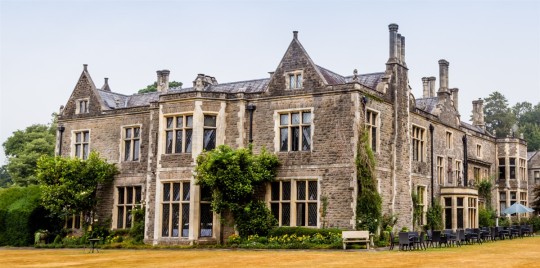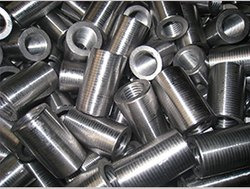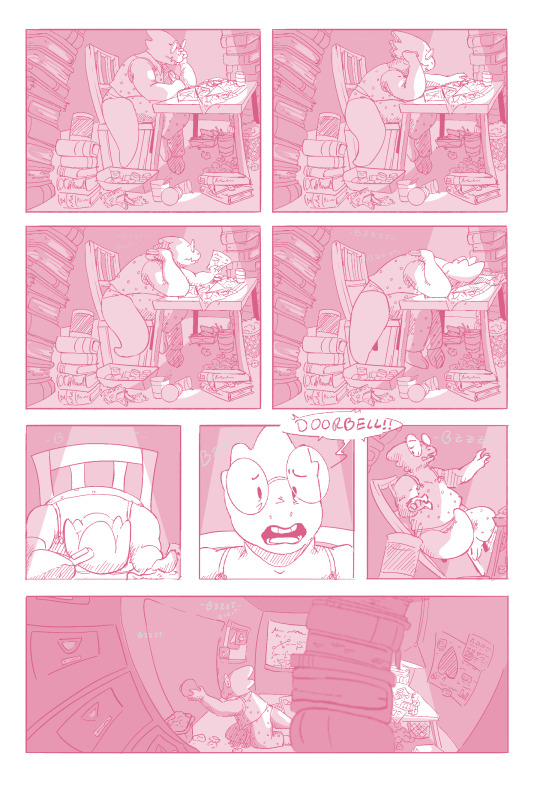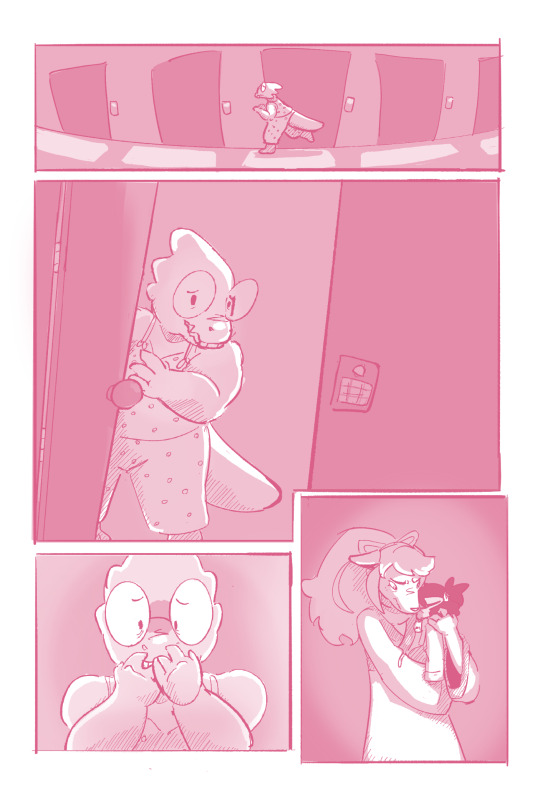#Structural integrity
Explore tagged Tumblr posts
Text
Structural Integrity #2

I ran out of steam immediately, the rest of the comic is gonna be gross sketches like this until I decide otherwise
First/previous
#kanako ketsukane#structural integrity#undertale yellow#undertale comic#undertale amalgamates#undertale au#alphys#how do comic artists do it#How does twin runes do it#ceroba uty
58 notes
·
View notes
Text
#Foundation Repair#Foundation Solutions#Structural Integrity#Wood Rot#Home’s Structural Integrity#The Unseen Threat To Your Home’s Structural Integrity#Understanding Wood Rot#foundation contractor#foundation experts#foundation repair solutions#foundation services#residential foundation repair services#foundation repair near me#foundation solution
8 notes
·
View notes
Text
🐔 or 🥚❓


2 notes
·
View notes
Text
Unveiling Hidden Gems: Discovering the Charm of Historic Homes
Timeless Treasures: Exploring the Allure of Historic Homes In the realm of real estate, historic homes hold a special place, exuding a unique charm and a sense of heritage that captivates homeowners and enthusiasts alike. These architectural wonders are a testament to the craftsmanship and rich history of a bygone era. In this article, we invite you to embark on a journey through time as we delve…

View On WordPress
#architectural features#community engagement#energy efficiency#Gardens#heritage#historic homes#historical significance#outdoor spaces#period-specific decor#preservation#Real Estate#restoration#storytelling#structural integrity#unique floor plans
2 notes
·
View notes
Text
Exploring the Benefits of Checker Plate Aluminium in the Construction Industry
Checker plate aluminium is becoming increasingly popular in the construction and industrial materials sectors, particularly for its durability and aesthetic appeal. Minmetals East is at the forefront of offering high-quality checker plate aluminium that meets the diverse needs of various industries.
The unique design of checker plate aluminium provides excellent slip resistance, making it an ideal choice for flooring, walkways, and ramps. This safety feature enhances workplace environments, reducing the risk of accidents and ensuring a secure footing for workers.
In addition to safety, checker plate aluminium is lightweight yet strong, making it easy to handle and install while maintaining structural integrity. Minmetals East's commitment to quality ensures that customers receive products that are not only functional but also sustainable, contributing to environmentally friendly construction practices.
Moreover, the versatility of checker plate aluminium allows it to be used in a variety of applications, including in the manufacturing of industrial materials and water treatment facilities. As industries continue to innovate, Minmetals East remains dedicated to providing solutions that meet the evolving demands of the market.
Embrace the advantages of checker plate aluminium and elevate your projects with the superior products from Minmetals East!
#structural integrity#Minmetals East#lightweight#water treatment facilities#durability#safety#versatility#construction industry
0 notes
Text

Types of Rebar Couplers for Concrete Structure
Rebar couplers play a crucial role in connecting reinforcing bars and are essential components for strengthening concrete structures. By utilizing rebar couplers, the compressive performance, load-bearing capacity, overall stability, flexibility, and seismic resistance of structures can be significantly enhanced.
Types of Rebar Couplers:
1. Fixed Rebar Couplers:
Fixed rebar couplers are a common type of coupler made of metal material, typically cylindrical in shape with an inner diameter that matches the diameter of the rebar. These couplers are easy to install, closely compatible with the rebars, effectively transfer forces, and ensure a stronger and more secure structure.
2. Threaded Rebar Couplers:
Threaded rebar couplers are a prevalent high-strength connection method compared to traditional fixed couplers. Usually made of carbon steel, these couplers undergo galvanization treatment to enhance corrosion resistance, providing higher load-bearing capacity and durability.
3. Plastic Rebar Couplers:
A relatively new option is plastic rebar couplers, constructed from high-strength plastic with characteristics such as lightweight and excellent insulation properties. Plastic rebar couplers are suitable for structures with less stringent weight requirements, helping reduce construction burdens, and offering outstanding environmental benefits.
In conclusion, selecting the appropriate type of rebar couplers is crucial for ensuring the structural integrity and performance of concrete structures. Whether opting for fixed, threaded, or plastic couplers, each type offers unique advantages in terms of installation ease, compatibility, strength, and environmental considerations.
0 notes
Text
Column Jacketing: Types and Benefits Explained
Column jacketing strengthens columns and improves their load-carrying capacity. Engineers add materials around existing columns to boost their strength, stiffness, and durability. This method helps repair and upgrade structures to meet modern safety standards. Jacketing of columns increases their resistance to seismic forces, making buildings safer during earthquakes. It also improves the…
#building rehabilitation#building renovation#civil engineering#column jacketing#column strengthening#composite jacketing#concrete jacketing#construction repair#FRP jacketing#infrastructure upgrade#load-bearing capacity#reinforced concrete#retrofitting columns#seismic retrofitting#steel jacketing#Structural Engineering#Structural Integrity#structural reinforcement#structural stability#structural strengthening
0 notes
Text
The City That Almost Fell Apart: A Tale of Architecture, Resilience, and Reinvention
It started with a single crack. Not large, barely noticeable to the untrained eye, but to the engineers overseeing the structure, it was an ominous whisper of trouble. The building had stood for decades, a silent witness to the growth of the city around it. But time is a relentless force, and even the strongest of foundations can falter under its weight.
A routine inspection had turned into a nightmare. The walls, once proud and unyielding, now bore hairline fractures that traced delicate spiderwebs across their surface. The structural integrity of the entire block was in question. Tenants were evacuated, businesses shuttered, and a sense of unease settled over the neighborhood. What had gone wrong? More importantly, how could it be fixed?
The Forgotten Layers Beneath Our Feet
Every city has its hidden layers, buried beneath concrete and steel. Foundations rest on history, often quite literally, as old structures are built upon remnants of the past. In this case, the problem lay not in the building itself but in what lay beneath it. The ground had shifted, subtly but persistently, undermining the stability of everything above.
Experts traced the issue back to old, forgotten sewer lines that had weakened over time. Water had seeped into the soil, creating pockets of instability. It was a ticking time bomb that no one had noticed until the cracks had appeared.
This was more than just an isolated problem—it was a wake-up call. How many other structures across the city were vulnerable? Could a disaster be looming just beneath the surface, hidden in plain sight?
Engineering a Solution
The challenge wasn’t just about fixing the damaged structure; it was about preventing future failures. A team of architects, engineers, and urban planners gathered to strategize. The solution required a deep understanding of materials, stress points, and the interplay between natural forces and human-made structures.
Instead of merely patching the cracks, they opted for a comprehensive approach. Reinforcements were made to the foundation, accounting for shifts in the soil. The outdated sewer system was replaced, ensuring proper drainage and reducing the risk of further erosion. But beyond these physical repairs, the team also recognized the need for smarter urban planning—designs that accounted for the changing landscape beneath the city’s feet.
When Buildings Tell Stories
Cities are more than just collections of buildings; they are living narratives of human ambition, failure, and resilience. Every street has its own story, every structure a history of decisions made, risks taken, and challenges overcome.
In the aftermath of the repairs, something fascinating happened. People began to see their city differently. Where they once saw just sidewalks and facades, they now saw the hidden forces at play—the weight of history, the power of engineering, and the delicate balance that keeps a city standing. Architects and designers began incorporating new methods into their projects, ensuring that future constructions were not just beautiful but built to last.
The Future of Sustainable Architecture
This incident sparked a broader conversation about sustainable architecture and resilient city planning. Traditional construction methods, while effective for their time, often failed to account for long-term environmental changes. Now, new technologies were being integrated into urban development—smart materials that adapt to stress, self-healing concrete that repairs minor cracks, and AI-driven analysis tools that predict structural weaknesses before they become critical.
The question was no longer just about fixing what was broken; it was about designing structures that could withstand the tests of time, nature, and human expansion. The lesson learned from that one cracked building rippled outward, influencing future projects and shaping a city that was prepared for whatever lay ahead.
The Unseen Architects of Stability
Most people never think about the invisible work that keeps their world standing. The bridges they cross, the buildings they enter, the tunnels they travel through—all of these are the result of meticulous planning, constant monitoring, and a deep understanding of materials and mechanics.
Yet, for those who dedicate their lives to this field, every project is a puzzle, every structure a challenge to be solved. They work in the background, ensuring that what stands today does not crumble tomorrow. Their work is rarely noticed, except in moments of crisis. But without them, the very fabric of urban life would collapse.
This is the essence of great design—not just creating something that looks impressive, but ensuring that it endures. Behind every well-built structure is a team of minds who have considered every possibility, accounted for every variable, and planned for every contingency.
And as the repaired building once again became a thriving hub of activity, the city moved forward, stronger and wiser. Because in the end, architecture isn’t just about structures; it’s about the people who live within them and the stories they carry forward.
At the heart of these efforts, in the quiet but determined pursuit of excellence in architectural solutions, stands a name dedicated to the craft: ParamountBuilt.
#architecture#branding#commercial#architectural design#structuralengineering#structural integrity#structuraldesign
1 note
·
View note
Text
Underwater Hull Inspections, Cleaning & Propeller Maintenance – How Weser Maritim Prevents Damage, Ensures Compliance & Improves Fuel Efficiency
Underwater hull inspections are essential for preserving a vessel’s structural integrity, enhancing fuel efficiency, and ensuring compliance with maritime regulations. Regular inspections help prevent corrosion, fractures, and hull fouling, reducing operational costs and maintaining seaworthiness.
Propeller maintenance is equally crucial, as a well-maintained propeller minimizes vibrations, improves propulsion efficiency, and lowers energy consumption.
Weser Maritim offers advanced underwater repair services, including high-resolution inspections, ultrasonic thickness measurements, and in-situ welding. Their team of expert divers and engineers provides rapid response solutions for unexpected hull damage and propeller malfunctions.
Case studies highlight Weser Maritim’s success in preventing major hull damage and ensuring compliance through propeller maintenance. Their services help shipowners avoid costly drydock repairs, reduce fuel consumption, and meet regulatory standards.
By partnering with Weser Maritim, vessel owners benefit from rapid response, technical expertise, comprehensive solutions, and global service coverage, ensuring reliable and efficient underwater maintenance.

#Underwater Hull Inspections#Ship Repair#Vessel Maintenance#Maritime Regulations#Fuel Efficiency#Propeller Maintenance#Corrosion Prevention#Weser Maritim#Hull Cleaning#Marine Growth Removal#Structural Integrity#Seaworthiness#In-Situ Repairs#Underwater Welding
0 notes
Video
youtube
I Built A Giant Bunker Underground. (Trench Warfare is Back.)
#youtube#underground fortifications#trench bunker#army uniform#land warfare#structural integrity#carbon monoxide poisoning
0 notes
Text
Apartment Construction: How to Conduct a Thorough Quality Check
When buying a home, the dream is to find a space that’s not only beautiful but also resilient against natural disasters like heavy rains or floods. Evaluating the quality of an apartment’s construction is a critical step in ensuring long-term safety and durability. Here’s a guide to help you assess the construction quality of your future home.

Understanding Apartment Construction Quality The strength and longevity of an apartment depend on the materials used, the expertise of the workers, and the techniques applied during construction. While visually appealing and technologically advanced apartments are attractive, their true value lies in the quality of their construction.
Key Areas to Evaluate
Construction Style and Structural Design Assessing the construction style is vital to ensure the building can handle natural calamities like earthquakes. If you’re unsure, visit the site with a construction expert to identify any signs of weak structural integrity.
Material Quality The materials used should be durable and meet quality standards to minimize future maintenance costs. Check the shelf life of materials and ensure inspections are conducted during construction.
Safety Measures Confirm the building has adequate safety features, such as:
Wide staircases for easy evacuation Earth-leakage circuit breakers (ELCB) and residual current circuit breakers (RCCB) for electrical safety Emergency exits and flood resistance measures
Plastering and Finishing Inspect the walls for cracks, poor-quality plaster, and substandard paint. Perform simple tests, like pouring water on bathroom floors to check drainage or tapping walls to identify hollow spots.
Fixtures and Fittings Examine bathroom fittings, electrical connections, door locks, and window mechanisms. Test water pressure and check for proper pipe fittings. Investigate flooring materials and verify their durability.
Critical Factors in Construction Quality
Soil Quality Good soil, like loamy or sandy soil, provides a strong foundation. Avoid clayey or black-cotton soil, as they are prone to swelling and shrinking, which can weaken the structure.
Concrete Strength Ensure the concrete mix meets the required standards for durability. Request lab reports on the concrete-to-sand ratio or perform a nail test on the walls to gauge their strength.
Wall Thickness Walls should adhere to the builder’s specifications for thickness. Test by tapping the walls or consulting a construction expert to ensure they meet the required standards.
Paint Quality Good-quality paint protects the walls and enhances their appearance. Make sure the walls are plastered properly before painting to ensure longevity.
Evaluation Methods Regular Inspections: Engage professionals to inspect construction progress and identify issues early. Testing and Certification: Conduct soil, concrete, and waterproofing tests to confirm adherence to quality standards. Post-Construction Assessments: After completion, thoroughly check for any defects and gather resident feedback to address issues.
Conclusion Assessing apartment construction quality involves examining materials, structural design, and safety features. By conducting detailed inspections and relying on professional advice, you can secure a home that offers safety, durability, and peace of mind. At Confident Group, we prioritize quality in every project, ensuring our homes meet the highest standards for a safe and comfortable living experience.
0 notes
Text



Pt 1
Haha I've done it I've made an Undertale au comic welcome to Structural Integrity
First/ next
#welcome to Structural Integrity!!#Structural Integrity#undertale au#undertale comic#undertale yellow#undertale#kanako ketsukane#uty kanako#Ceroba uty#alphys#you can tell when i got lazy lmao#how does one make a comic
37 notes
·
View notes
Text
Weep Holes: An Essential Component For Structural Integrity

The world of construction methodologies is vast, dynamic, and continuously evolving. Among the myriad of procedures and mechanisms crucial to the development of robust structures, a particularly crucial yet often overlooked feature is the ‘weep hole.’ In this blog, we delve deeper into what weep holes are, focus mainly on their application in cinder block structures, reasons for their installation near the footing, and the benefits that they provide related to relieving water trapped within a structure.
To begin with, let’s establish what Weep Holes are. Weep holes, as the name suggests give an image of something that exudes, seeps out, or, indeed, weeps. In construction parlance, they are purposely drilled in a structure to allow the movement of water or to let it escape from within.
Though these holes can be integrated into several types of structural system, their use is widely popular in cinder block constructions. Cinder blocks, also known as concrete masonry units, are commonly used in residential as well as commercial construction due to their affordability, strength, and insulation properties. Their design usually involves hollow cores, or cavities, that can unintentionally trap water within. Whether it’s from groundwater, landscape irrigation, or rainfall, the cinder block can host this water, giving birth to many potential issues such as mold, mildew, efflorescence, or even structural failure if water freezes and expands.
Therefore, to alleviate these concerns, weep holes are drilled into the cinder blocks, typically in the bottom row and near the footing. Placed lower down because water tends to flow to the lowest point due to gravity, these openings play a vital role in the overall health and longevity of the structure.
When water is present in the hollow cavities of the cinder block, the weep holes facilitate an escape route. But it isn’t just about aiding drainage; these holes also play an essential part in the structure’s ventilation, helping trapped moisture to dry up more quickly.
One might wonder–why near the footing? The footing of a building is the lowest part of the structure, usually installed below ground level. For blocks near the footing, water accumulation is most likely due to their proximity to the ground. To prevent rising dampness creeping up into the structure and ensure optimal effectiveness, weep holes are strategically drilled near the footing.
One concern that often arises about weep holes is the threat of small creatures or pests entering through them. To prevent this, weep holes are generally covered with plastic, steel, or another type of mesh to allow water escape but deter critters.
Let’s sum up the importance of weep holes: They are not a construction afterthought but an essential design feature engineered to prolong and conserve the structural integrity of cinder block structures, whether they be a garden wall, chicken coop, house, or commercial building. By simultaneously promoting ventilation and facilitating the drainage of trapped water within the cinder blocks’ hollow cavities, weep holes help to prevent the onset of undesirable moisture issues, water damage, and structural instability.
So the next time you come across some random, small holes in a structure, remember, they aren’t gaps in design or construction; they’re mitigating water damage one drop at a time. This is the importance of an often overlooked, yet vital construction element – the weep hole.
Tagged Essential Component For Structural Integrity, Structural Integrity
#Essential Component For Structural Integrity#Structural Integrity#foundation repair#foundation solutions#foundation contractor#foundation experts#foundation repair solutions#foundation services#residential foundation repair services#foundation repair near me#foundation solution#signs of foundation problems
7 notes
·
View notes
Text
How to Choose the Best Basement Wall Repair Contractors in North Carolina
A solid foundation is crucial for the safety and longevity of any home, and basement walls play a vital role in maintaining structural integrity. If you're facing issues like cracks, bowing, or water damage in your basement walls, finding experienced basement wall repair contractors is essential. For homeowners near North Carolina, selecting the right contractor can save you time, money, and stress.

Signs You Need Basement Wall Repairs
Basement wall issues often start small but can escalate quickly. Here are some common signs that indicate you need professional repair services:
Visible Cracks: Horizontal or stair-step cracks are a clear indication of foundation stress.
Bowing or Bulging Walls: This can be caused by hydrostatic pressure or shifting soil.
Water Seepage: Moisture entering through basement walls can lead to mold and structural damage.
Uneven Floors: This can be a symptom of shifting basement walls.
Foundation Settlement: Signs include sinking walls or gaps between walls and floors.
If you’re noticing any of these issues, it’s time to consult with trusted basement wall repair contractors.
Why Choose Professional Basement Wall Repair Contractors
DIY fixes might seem tempting, but basement wall repairs often require specialized tools and expertise. Professional contractors ensure:
Accurate Diagnosis: Identifying the root cause of the problem.
Tailored Solutions: Techniques like wall anchors, carbon fiber reinforcement, or drainage systems based on your specific needs.
Long-Term Results: Ensuring structural integrity and preventing future issues.
For homeowners near North Carolina, partnering with local experts like Atlantic Foundation provides peace of mind and high-quality results.
Key Considerations When Choosing a Contractor
To find the best basement wall repair contractors near North Carolina, keep these factors in mind:
Experience and Expertise: Look for contractors with extensive experience in handling basement wall repairs. They should be familiar with the soil and weather conditions in North Carolina.
Licenses and Certifications: Ensure the contractor is licensed and certified to perform structural repairs.
Customer Reviews: Check online reviews and testimonials to learn about their reputation.
Comprehensive Services: Opt for contractors who offer a range of solutions, such as wall stabilization, crack repairs, and waterproofing.
Warranty: A reliable contractor provides a warranty on their work to guarantee long-term results.
Atlantic Foundation, a trusted name in North Carolina, meets all these criteria and offers exceptional basement wall repair services.
Techniques for Basement Wall Repairs
Modern contractors use a variety of methods to address basement wall issues, including:
Wall Anchors: Effective for stabilizing bowing walls by counteracting pressure.
Carbon Fiber Reinforcement: Strengthens cracks and prevents further damage.
Epoxy Injection: Repairs cracks and restores wall integrity.
Interior and Exterior Waterproofing: Prevents water infiltration to protect the structure.
Foundation Piering: Stabilizes sinking walls and foundations.
Discuss these options with your contractor to determine the best approach for your home.
Why North Carolina Homeowners Trust Atlantic Foundation
When it comes to basement wall repair contractors near North Carolina, Atlantic Foundation stands out for its:
Experienced Team: Decades of expertise in basement wall repair and foundation services.
Custom Solutions: Tailored repairs to meet your specific needs.
Transparent Pricing: No hidden fees, just honest and competitive pricing.
Exceptional Customer Service: Dedicated to providing a stress-free experience.
Visit their basement wall repair page for more details on their services.
Conclusion
Basement wall issues should never be ignored. By choosing the right basement wall repair contractors near North Carolina, you can ensure the safety and stability of your home. Don’t wait until minor problems turn into major structural concerns—consult experts like Atlantic Foundation today to safeguard your home’s foundation.
For more information, visit Atlantic Foundation’s website or contact their team to schedule an inspection.
0 notes
Text
Enhancing Building Integrity with Expansion Joint Covers by RNS Qatar
In modern construction, maintaining building integrity and ensuring structural flexibility are essential for long-lasting, safe, and efficient structures. One of the critical components that support these aspects is expansion joint covers. At RNS Qatar, we specialize in providing top-quality construction solutions designed to accommodate building movement, ensuring longevity and durability.
What Are Expansion Joint Covers?
Expansion joint covers are structural components that bridge gaps between different sections of a building. These gaps are designed to allow for movement caused by factors such as thermal expansion, seismic activity, and settling. Without these covers, buildings would be susceptible to cracks, leaks, and other structural damages.
Why Are They Essential for Building Integrity?
The primary role of expansion joint covers is to maintain a building’s overall stability while allowing it to respond to environmental changes. They help prevent structural damage by absorbing movement and relieving stress in key areas. This flexibility ensures enhanced building integrity, minimizing maintenance costs and prolonging the structure’s lifespan.
Structural Flexibility and Seismic Protection
Structural flexibility is vital, especially in regions prone to seismic activity. Buildings equipped with durable expansion covers can withstand earth tremors and shifting grounds more effectively. At RNS Qatar, we offer seismic protection solutions that meet international safety standards, ensuring buildings remain safe even in challenging conditions.
Custom Joint Covers for Unique Architectural Solutions
Every building is unique, and its design requirements vary. That’s why RNS Qatar provides custom joint covers tailored to meet specific architectural needs. Whether for commercial complexes, industrial facilities, or residential buildings, our designs seamlessly integrate into the structure, enhancing both functionality and appearance.
Our architectural solutions not only focus on performance but also consider aesthetic appeal. We offer a range of materials, finishes, and styles that blend with the building’s overall design, ensuring a cohesive look.
Quality Construction Materials for Lasting Performance
When it comes to quality construction materials, RNS Qatar stands out as a trusted name. We use high-grade materials known for their durability, resistance to environmental factors, and low maintenance requirements. Our expansion joint covers undergo rigorous testing to ensure they meet international quality and performance standards.
Applications of Expansion Joint Covers
Commercial Buildings: Ensure safety and durability in office complexes, shopping malls, and public buildings.
Industrial Facilities: Handle heavy-duty movement in factories and warehouses.
Infrastructure Projects: Support roads, bridges, and airports where structural movement is significant.
Residential Buildings: Enhance safety and reduce maintenance in apartment complexes and housing projects.
Why Choose RNS Qatar?
Expertise & Experience: With years of experience in the industry, we are leaders in providing reliable construction solutions.
Customized Solutions: We tailor our products to meet the unique needs of every project.
Quality Assurance: Our products are manufactured using superior materials, ensuring long-lasting performance.
Comprehensive Support: From design consultation to installation, we provide end-to-end support for all your construction needs
Conclusion
Investing in high-quality expansion joint covers is crucial for maintaining building integrity, ensuring structural flexibility, and providing seismic protection. With RNS Qatar, you get durable expansion covers, innovative architectural solutions, and top-tier quality construction materials that meet the highest industry standards.
Contact RNS Qatar today to learn more about our specialized Qatar building solutions and how we can help secure your next construction project. Let us be your trusted partner in building a safer and more resilient future.
#expansion joint covers#expansion joints in Qatar#building solutions Qatar#construction materials#structural integrity#flexible joint systems#premium expansion covers#RNSQatar#building flexibility#construction innovation#durable joint systems#architectural solutions
0 notes
Photo

How Do Lighthouses Not Fall?
#lighthouse#lighthouses#engineering#structural integrity#maritime safety#coastal architecture#lighthouse design#physics#ocean#midjourney#ai
0 notes